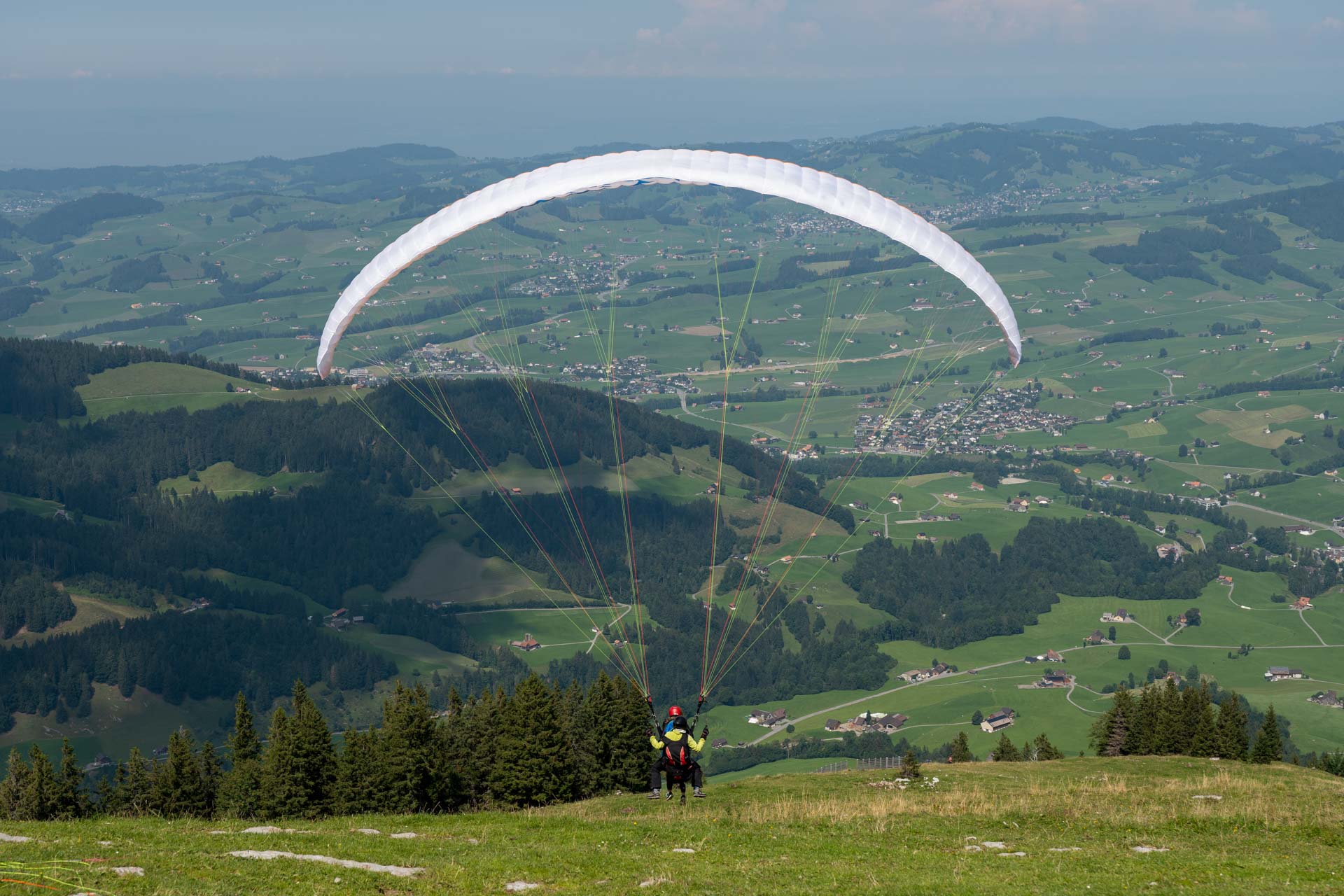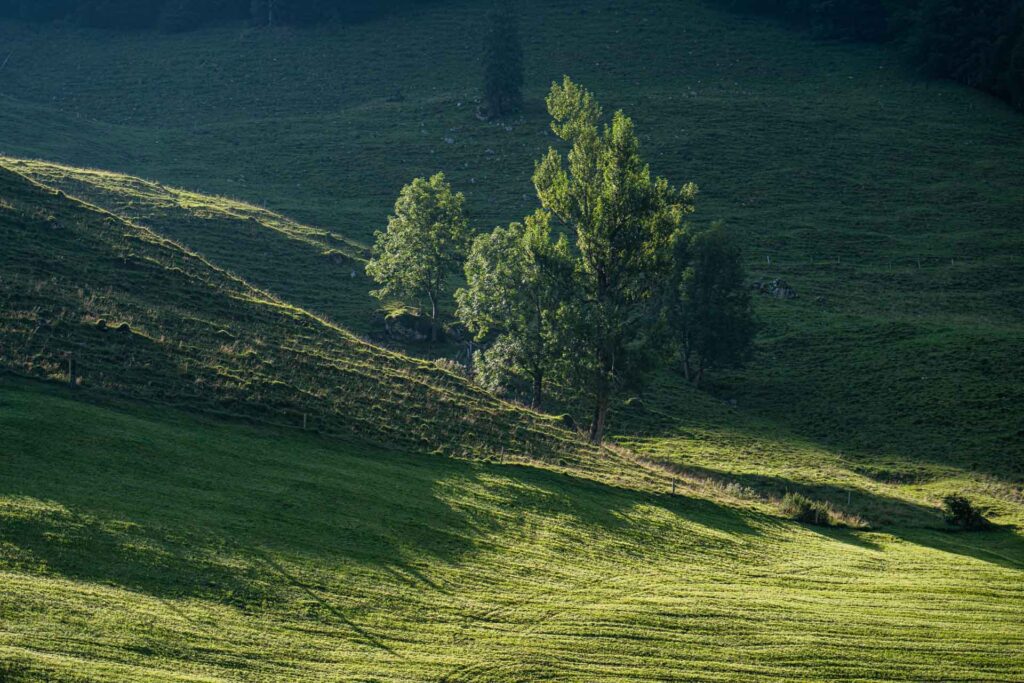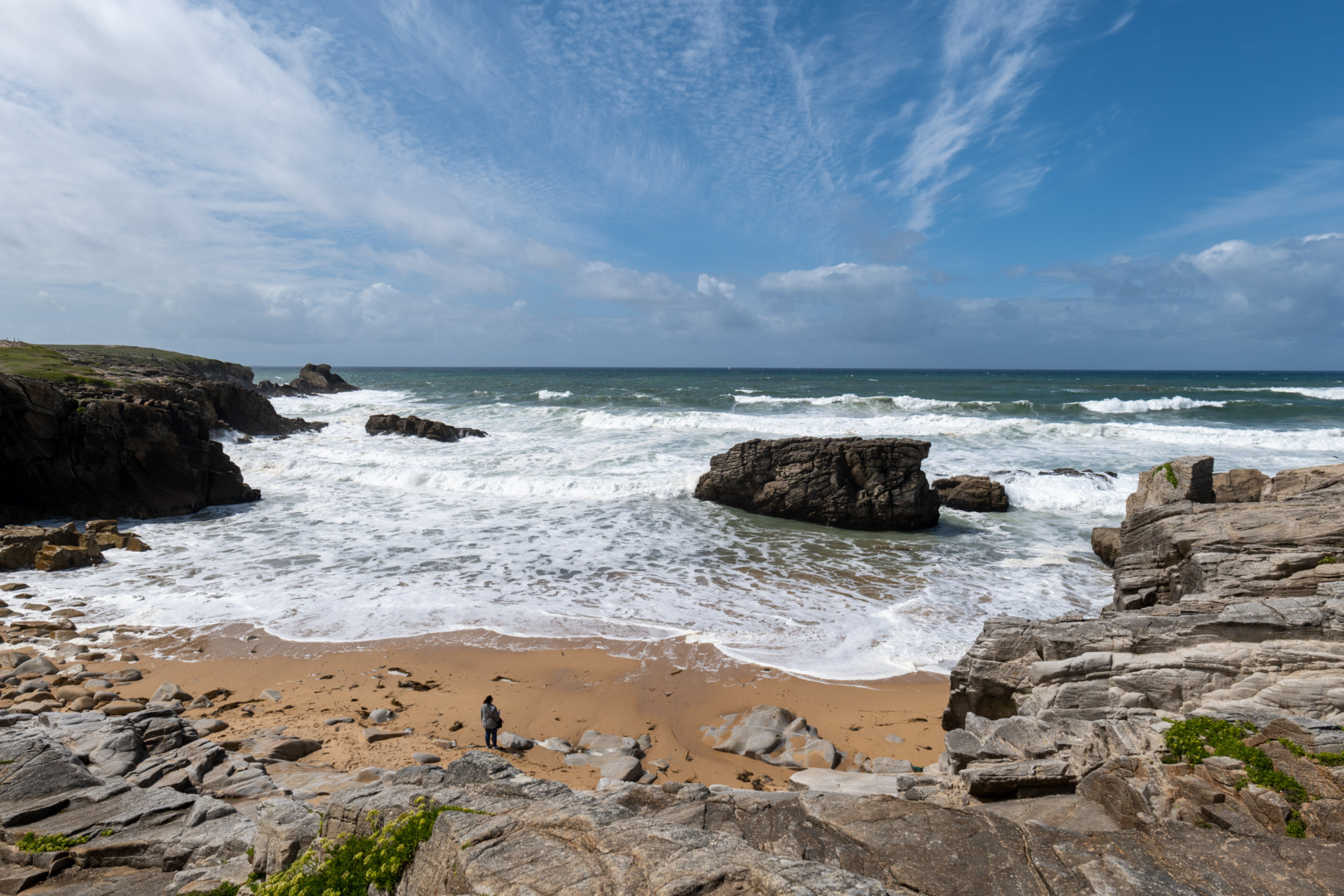We all know the moment. We are planning to buy a lens. Or we have to pack our bag for the next assignment. Which lenses do we take? A slow wide-range zoom, a fast but not so versatile zoom? Or a few primes? The range vs aperture question is always in the background. A YouTube video gave the impulse to share some thoughts on choosing the right L-Mount lens…
It’s the key question when choosing a zoom lens, and the colleagues from Leigh and Raymond Photography put it into a great formula: range vs. aperture. In a quite enlightening video, two L-Mount lenses are compared: The Panasonic 24-70/2.8 and the 24-105/4. The former a full stop faster, the latter offering a substantial gain in focal length, which is useful not only for portraiture or nature photography. As Leigh correctly points out: Either of these lenses could be your workhorse. So, not so much help in selecting the right L-Mount lens at first sight.


Artificial bokeh, resolution and more: AI wizardry challenges all our known equations
The interesting thing is that it’s all about compromises — and that all these compromises can be overcome with new compromises. A lack of speed can be compensated for by higher ISO values, image stabilisation and, finally, AI based denoising (read Keith James’s article on it here). Each of these solutions has its trade-offs, as we know, but they are serious options. A lack of focal length can be addressed by cropping in post-production, and with current 47 or even 60 MP sensors, there is no reason why we should not do it (unless we are purists). Just remember the images I showed in my latest M Files episode about the Epson R-D1 with its frugal 6.1 MP resolution. So, AI can already be a game changer when it comes to choosing the right L-Mount lens.
Depth of field: No big difference between f/28 at 70mm and f/4 at 105mm…
But there remains the question of bokeh. Until recently, most photographers would have argued that a wide initial aperture can’t be replaced by anything for bokeh effect. But pure physics shows that this should not be overestimated. In this depth of field calculator, you can see that you have, always at a 1m distance, 2cm depth of field after 105mm and f/4 and 3cm after 70 and f/2.8. Both are less than the distance between the tip of your nose and the eyelashes. At the short end, it’s 29cm at 24mm and f/2.8 instead of 42cm at f/4. And, coming back to “until recently”, computational bokeh is becoming a serious alternative also in photography with proper cameras, as discussed recently by Keith James.




Count in weight in price when choosing the right L-Mount lens
What’s entirely real, though, is space and weight in your bag, and the hole in your wallet after a lens purchase. Choosing the right L-Mount lens (also true for all other systems, of course) is also dominated by other factors. And here, the difference is significant. The 24-105/4 has a RRP of €1,399 here in Germany (it will be similar in other markets), and street prices can be considerably lower. You can also ask your dealer if he has an orphaned kit lens which he wants to sell with a nice discount.
The 24-70/2.8 is considerably pricier at €1,999 RRP which makes it comparably expensive in the Sony/Canon/Nikon competition. Weight is 680g for the 24-105 vs 935g. So, there is also the known weight vs speed question.
Why not look at the short end when choosing the right L-Mount lens?
So, range or aperture? A look in another direction might be helpful. The Leica Vario-Elmarit SL 24-90/2.8-4 offers both (or nothing of it to a full degree), and does not compromise on image quality in any way. Many say it is one of the best zoom lenses ever made, and it is up to some of the very best primes of any manufacturer. But, alas, it is bulky and heavy. Therefore, it could also direct us to an entirely different answer to the range or speed question: Just look at the wide end (which you can’t extend by electronic means), select a lightweight and small lens that you are happy to take everywhere — and the rest can be done in post-processing. Have we ever mentioned that we love the Panasonic 20-60/3.5-5.6 here at Macfilos?




Finally, another thought. If you want really fast lenses for whatever reason, even f/2.8 could be slow. And there, the primes come into the equation when you are choosing the right L-Mount lens. Panasonic has an excellent range of fast Lumix primes between 18 and 100mm – exactly in the range we are discussing here. All of them, apart from the 100mm Macro, have a fast and, as it is claimed, fully useable f/1.8 initial aperture. These lenses are so good that their optics are appealingly the basis of Leica’s small (non-APO) Summicron-SL line. Three of them might be a viable alternative to the zooms.
Three fast primes — are they really heavier and costlier?
Should you decide on a trio of light primes instead of one zoom? Why not. Let’s put it together: 24/1.8 (€849, 310g) + 50/1.8 (€469, 300g) + 85 (€649, 355g) make for an investment of €1967 (as is the 24-70) and an overall weight of 965g (similar to the 24-70). Add another €450, and you can go for the light (295g) Macro 100/2.8 with 1:1 magnification ratio and stellar quality. With the 24-105, the comparison is less favourable of course, but then you win more than two stops. So do think of the primes as well when choosing the right L-Mount lens — it could be an interesting option as well. One question will be if you are in the mood and environment to change lenses. Sand, dust, and seawater spray belong to the things you would rather not have inside your camera.
Many options, as we see — and the L-Mount universe is not restricted to Panasonic. There is a wide selection of Leica, Sigma and other lenses, making L-Mount particularly attractive. But, I have to admit it, the existence of 70+ lenses makes picking the right L-Mount lens much more difficult. Nice to have the choice, though.
Read more on the Panasonic S5 with a very reasonably lens kit here (with many images)
Read here how to keep the overview of the many L-Mount options
Prioritising Weight over Speed: Is this the new fashion in lens design?
What do you think? What is more important in a zoom lens, range or aperture? How is your personal decision-making? Or do you think zoom lenses are generally too much of a compromise, and you are going for primes? Any special selection you want to recommend to the Macfilos readers? What is your personal approach to choosing the right L-Mount lens(es)? We will be delighted to hear your thoughts in the comments section.
Join the Macfilos subscriber mailing list
Our thrice-a-week email service has been polished up and improved. Why not subscribe, using the button below to add yourself to the mailing list? You will never miss a Macfilos post again. Emails are sent on Mondays, Wednesdays, and Fridays at 8 pm GMT. Macfilos is a non-commercial site and your address will be used only for communications from the editorial team. We will never sell or allow third parties to use the list. Furthermore, you can unsubscribe at any time simply by clicking a button on any email.




Hi, this article raises the age old question thatI do not think can be answered by anyone. I have been doing photography for 50 years and have evolved a lot partly due to age and partly due to AI software for noise, sharpening, and camera sensor advances. I think selecting a lens heavily depends on a lot of personal factors and can only be discovered by experience with equipment.
I have just moved from full frame to a m4/3 system due to weight issues and am perfectly happy.
Hi Brian, thanks you so much for directing us to entirely different options. Yes, M43 can be the sweet spot for many users. Especially the lenses are often excellent while small and light-weight. But then again, we saw so many innovations in the Full Frame market that it hard to believe that the camera industry is on the verge of collapse as some experts claim. At any rate, I fully agree that it is best to make your own experience- and to have a good perception of what you have arrived at your final destination. You obviously have – good to hear. All the best, JP
Thank you for this article which highlights the questions regarding the hardware. Too many choices take up a lot of our energy and can become a worry. Personally, I am a fan of fixed focal lengths, small, light, those that can almost be forgotten. And indeed, I crop in post-processing. And don’t forget to use fixed focal lengths like zoom lenses thanks to my feet…fixed focal lengths reduce the many choices made possible with zooms and thus force me to better define my framing, my perspective while moving and my depth of field. I simply can’t do it with a zoom that gives me too much freedom and I get lost. I’m absolutely not a purist but rather a person who photographs better under constraints. But these are just tools and everyone has to learn how to use them best. We look forward to hearing from you, dear passionate photographer friends.
“..We look forward to hearing from you, dear passionate photographer friends..” ..really?
OK, then I’ll reply, as there have been only 4 Comments till now. “..I simply can’t do it with a zoom that gives me too much freedom and I get lost”. But I want freedom. Why should I want to be constrained?
I like a camera which gives me enormous ISO range ..the Sony A7S series, for instance. I know that I can take photos in bright sunlight, and also in the deep, darkest gloom of little Greek roadside chapels – or by just the light of the silvery moon – handheld.
I like the freedom of a 24-200mm zoom ..but with next to no weight, or size, when it’s in a Sony RX100 MkVI small-sensor body. (I’m not specifically pushing Sony cameras here: I’ll use anything!) I like to walk in all directions, not be constrained to walking at 18º left or right of straight ahead, or 21º, or 24º, or 50º, or 90º. So why should I be constrained by the angle of view of individual lenses? Let’s have a whole range of possible views, from super-wide to super-long, so that I can shoot what I want to shoot, without constraint.
For instance I may want the whole frontage of king Henry VIII’s Hampton Court Palace (in Surrey, England) and a close-up of those famously twisted chimneys! I can do that with a one-lens zoom. I don’t have to carry a bag (whoops! ..dropped three lenses!) of separate glass. I’d also like a distant view of Edinburgh Castle ..and close-ups, too ..and I can do that with a zoom.
Single focal length lenses are, indeed, usually smaller and lighter than zooms. “..I am a fan of fixed focal lengths, small, light, those that can almost be forgotten..” you say.
Yup; small and light – exactly! But using a smaller-than-full-frame camera, you get small, light zooms which “..can almost be forgotten”. The 9-72mm zoom (equivalent to 24-200mm) of that little Sony RX100 MkVI. Or the super-teeny 3.8-5.9mm zoom (equivalent to 17.5-27mm) – on a super-teeny Pentax Q-S1 – which weighs only 74g. That’s only 4 grams more than my (metal strap) Apple watch. And half the weight of my metal strap Citizen watch.
The first Leicas were called ‘miniature’ cameras, as they were so much smaller than roll-film (or, say, quarter-plate) cameras. They were the ‘teeny’ cameras of their day. (Now they’re huge and heavy ..what went wrong?)
I’m quite a follower of that ‘miniature’ style of camera, because the smaller the camera, the smaller – and lighter – the lenses ..including lightweight zooms. (Using my feet, I don’t think I’d be allowed up on the roof for close-ups of the Hampton Court twisty chimneys.)
This is an interesting article, and definitely describes how I have made choices in the past.
Though, now a friend and I are rating lenses on what we call the 3 “P’s” for Price, Performance, and Packability. Of course, we really only get to pick two of these criteria and the third is most often a result of these choices.
Like David A, I am placing more importance on Packability. My Leica 24-70 f2.8 is a strong performer. But, its size and weight are such that I never want to carry it. So it ranks very low in terms of Packability, and is about to find its way into the box as trading stock.
Two of my lenses that rate high in terms of Price and Packability are the Lumix 24mm and the Sigma 100 Macro. Unfortunately, both are a bit lacking in terms of performance. The Sigma is excellent optically, and the Lumix is very good at close distances. But stopped down and focused at infinity, the Lumix can still be soft at the edges on my SL2. And both lenses are slow to focus on both the SL2 and Lumix S5.
In defense of the Sigma 100 and Lumix 24, the SL2 and the S5 are not speed demons when it comes to focus. So I am looking forward to trying these lenses on an S5II or possibly S1RII (if it really appears) before passing final judgement.
PaulB
Thanks, PaulB, for sharing your experience. The 3P concept sounds very convincing. Pick any two of them and you know the direction. At any rate, a well thought out two lens kit can cover for many needs. The Pana/Sigma 24+100 combo sounds very interesting. I just had the opportunity to have a quick look at the Pana 100, and the first impression was good. But then, it‘s the performance a different distances and apertures that matters – just as you are writing. All in all, I am quite happy that there are so many options in the L-Mount universe… All the best, JP
The question doesn‘t make sense to me, it all depends on the purpose, discovering the Finistère (Brittany/France) asks for a wide angle, but a scooterist gathering would be better done with a 50 or 75mm
Dear Christoph, of course you are right. I was assuming the purpose was set or known. The 24-70-ish range is a rightly seen as a workhorse zoom lens because it covers many needs. But then, if you know what you want to shoot, you might not need this versatility at all. All the best, JP
Thank you for addressing an intractable question JP. There are many choices to cloud our judgement. But, from my perspective, weight becomes the dominant filter with each advancing decade of life.
Thanks, David, for your comment and sorry for replying so late. Sure, weight is an important point, and the most tragic moments in photography are when you see a wonderful image but have no camera on you because you wanted to avoid carrying too much. And here, Micro Four Thirds comes in, as Brian Nicol mentions in his comment. While the cameras my not be that much smaller or lighter, the lenses definitely are. Just think of the excellent Olympus 40-150/2.8. All the best for an unburdened photographic career! JP